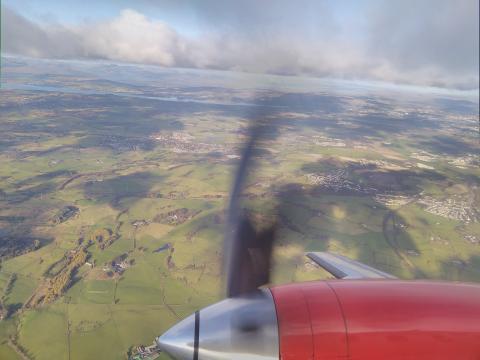Aerial View

The Google Maps app emails me each January with a summary of the previous year’s travelling. It says I've visited three continents, 68 cities and 137 ‘places’. I've spent 56 hours walking 117 miles (that would make me a rather slow and infrequent walker), cycled 7 miles in 1 hour (news to me) and spent 538 hours travelling 10,131 miles using transport. As I flew to Sydney and back this year (10,555 x2), the previous figure must simply refer to trains, buses and cars.
During a flight, phones are turned off or put in ‘flight mode’, a state of indolence which prevents their interference with the aeroplane’s technical equipment. Consequently, Google Maps sees me arrive in a new continent without following my journey there.
Despite our being able to fly for over a century, this mode of transportation continues to fascinate me. Greta and her friends are keen that we fly less, or not at all, so perhaps only the rich will be able to pay the prohibitive aviation taxes of the next decade. Fliers fortunate enough to have a window seat, assuming the view from which is unobscured by a wing or darkness, will see the earth as though it were a distant map. Motorways become little grey veins, fields a patchwork quilt, mountains mere bumps and piles on a landscape. The higher up one flies, the smaller and less relevant become the goings-on below.
The closer we grow to Christ, the less troublesome life’s pressures become. Outbreaks of a virus, the threat of terrorism, post-Brexit economic chaos: from an eternal perspective, such things offer little dread. We must not become detached to the world of which we are a part, but neither must we glue ourselves to it. As we increasingly focus on the eternal, changeless One, so the crowded motorways and formidable mountains diminish.
For as the heavens are higher than the earth, so are my ways higher than your ways, and my thoughts than your thoughts.
Isaiah 55:9
- Log in to post comments


 Sunday Worship 10.45am & 6.00pm
Sunday Worship 10.45am & 6.00pm